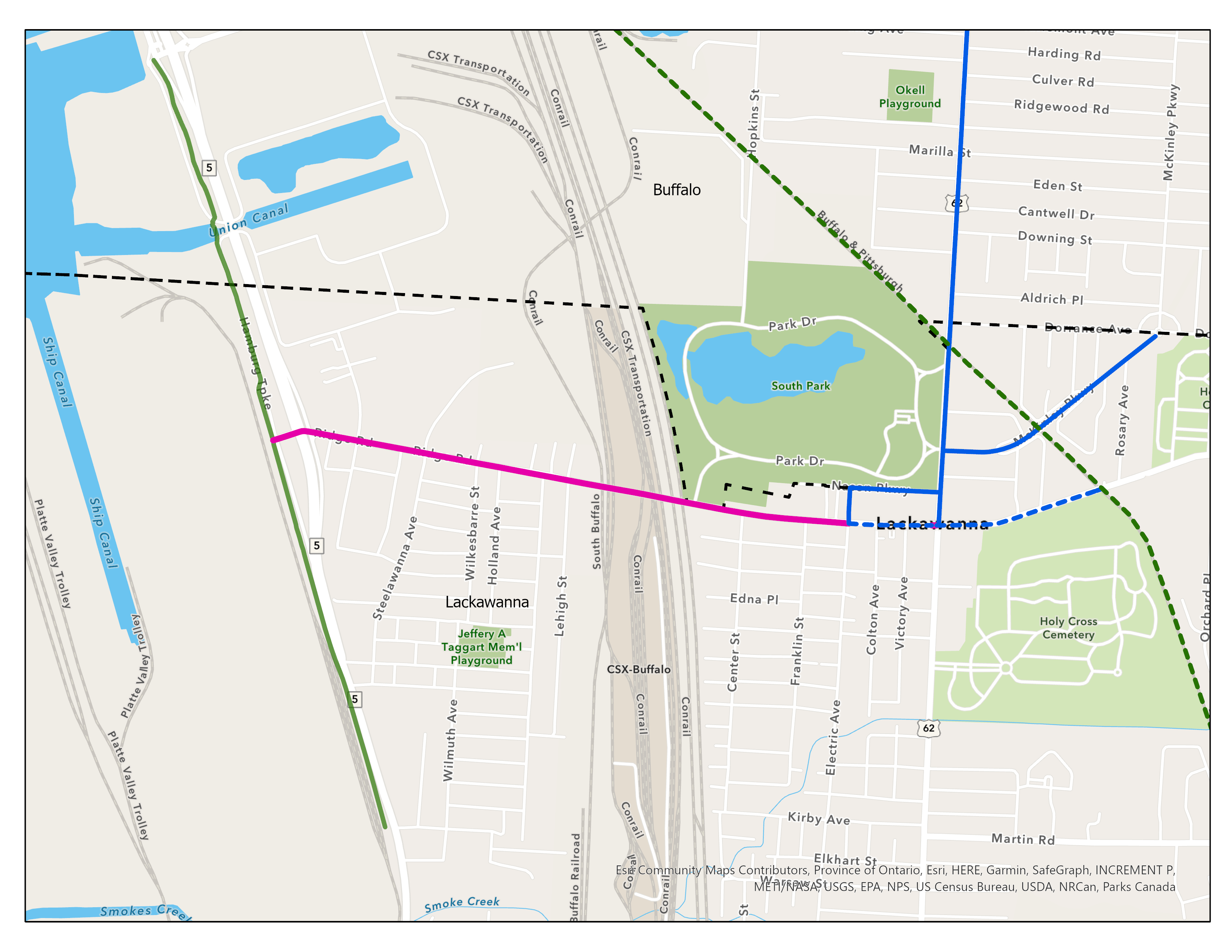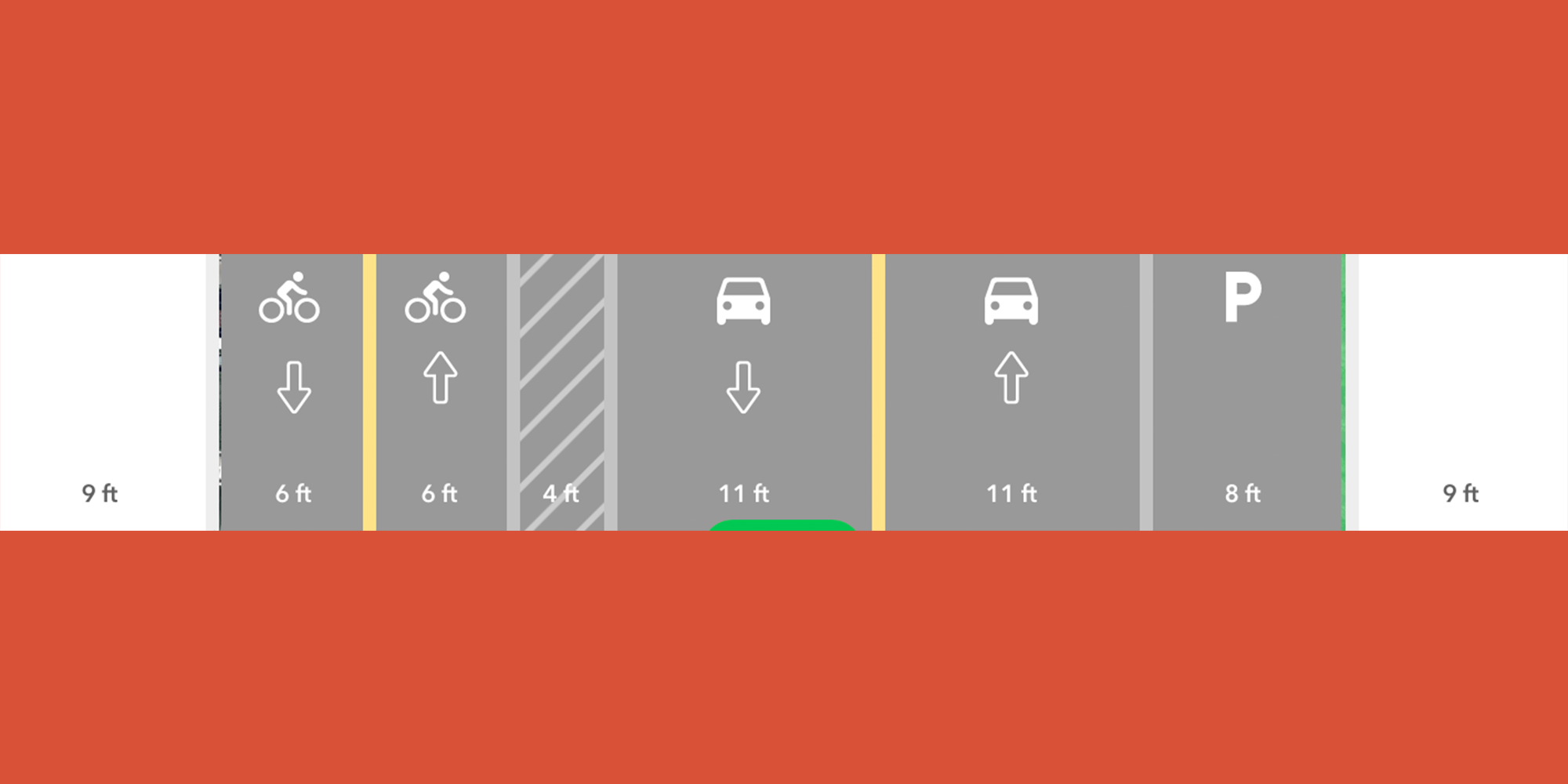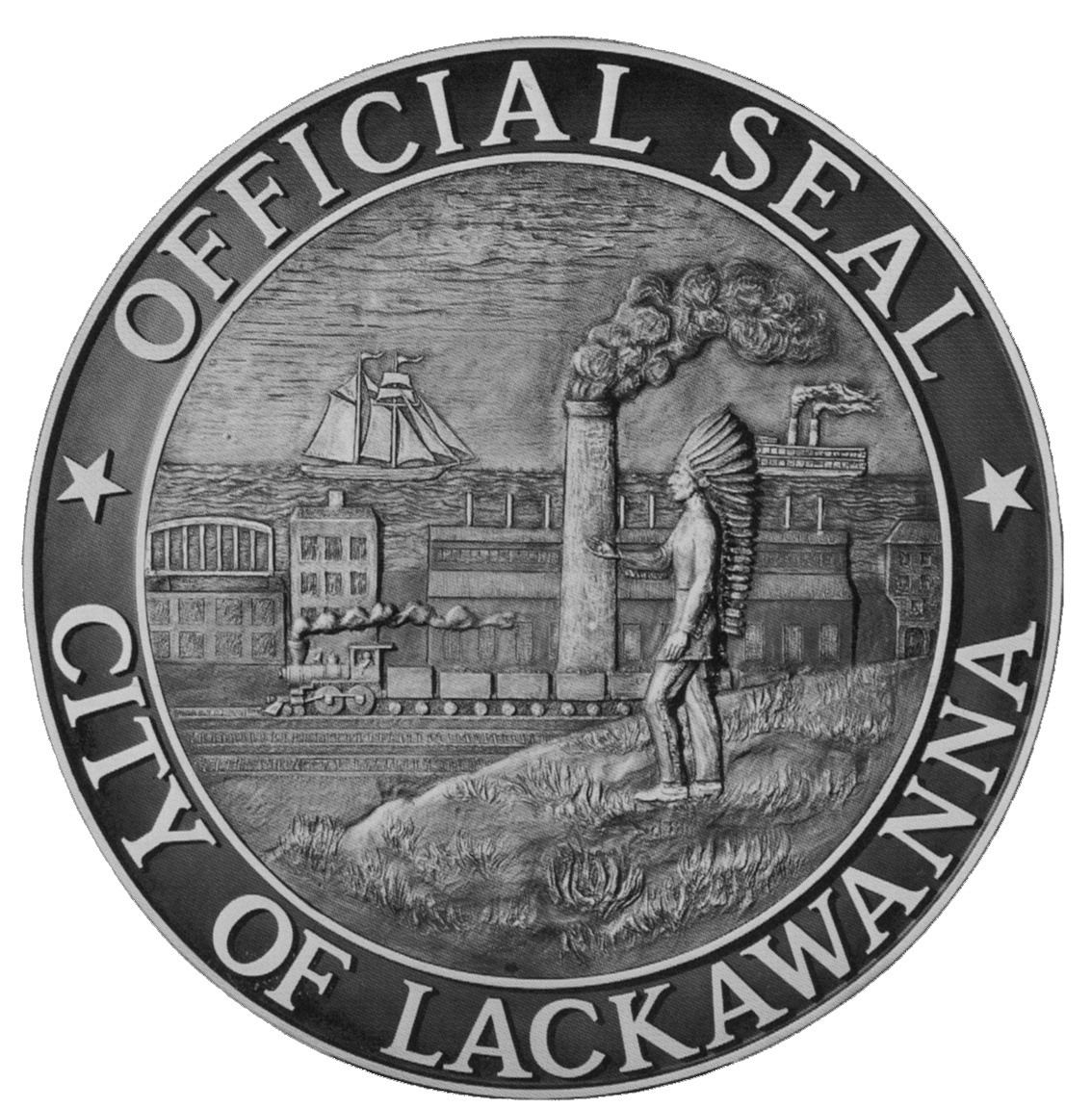Building a 1.4-Mile Protected Bike Lane
Working with the City of Lackawanna, GObike is building a 1.4-mile temporary two-way protected bicycle lane on the north side of Ridge Road between the new Erie County Industrial Heritage Trail along Fuhrmann Boulevard to Electric Avenue, connecting to Nason Parkway.
The two-way protected bicycle lane will use hardscape elements to protect cyclists from motor vehicles. To create the buffer, we’ll be using a curbing system from Rubber Form, a Lockport-based eco-industrial manufacturer, as well as flexible vertical delineators posts and special pavement markings.
Separated and protected bike lanes are the most reliable indicator of lower death and injury rates for all road users, whether they’re walking, riding a bike, and driving cars. Additionally, this connection represents the first leg of the proposed Southern Tier Trail.






